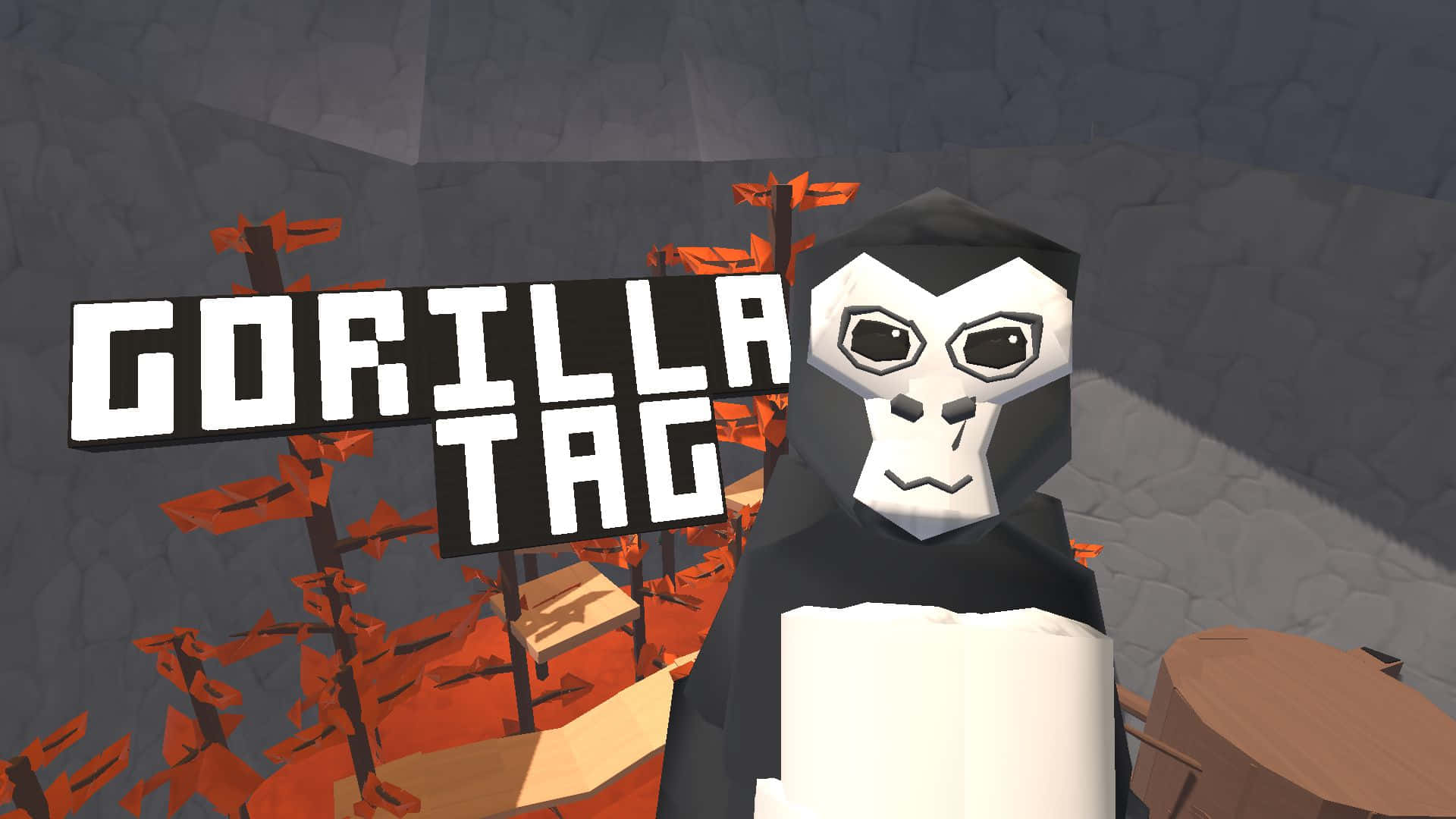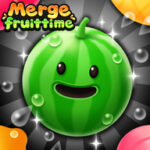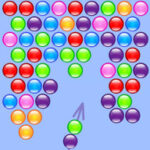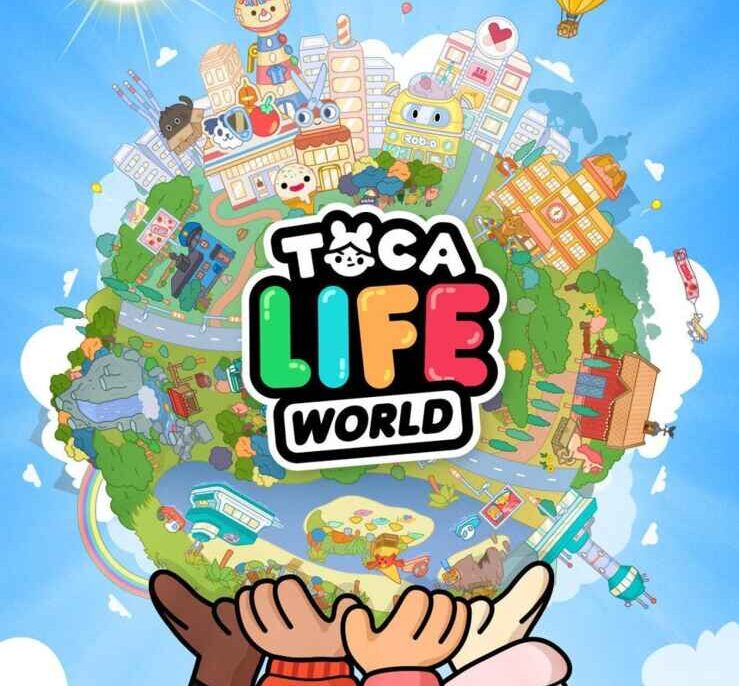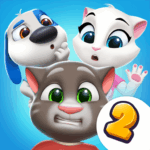Gorilla Tag: The Primal Joy of VR Movement and Social Play
In the rapidly evolving world of virtual reality, where immersive experiences often prioritize hyper-realism or complex simulations, a game emerged that defied conventional expectations, proving that simple mechanics and boundless social interaction could create a global phenomenon. That game is
Gorilla Tag. Developed by Kerestell "Lemming" Smith and later by his studio Another Axiom,
Gorilla Tag first clawed its way into early access on SteamVR and Meta Quest (via SideQuest and App Lab) in February and March 2021, respectively. It officially launched on the Meta Quest Store on December 15, 2022, on Steam on January 1, 2023, and on PlayStation VR2 on November 8, 2024. At its heart,
Gorilla Tag is a physics-based, legless VR tag game where players move entirely by pushing off surfaces with their hands, mimicking the locomotion of a gorilla.
This innovative movement system, combined with its free-to-play model and the inherently social nature of virtual reality, propelled
Gorilla Tag to stratospheric popularity. It became a breeding ground for viral content, attracting millions of players who delighted in its unique gameplay, the hilarious mishaps of its physics engine, and the pure, unadulterated joy of swinging through virtual trees and scrambling up walls like a primate.
Gorilla Tag has not only dominated VR charts but has also fostered a vibrant, bustling community that continues to expand. This article will delve into the ascent of
Gorilla Tag, exploring its groundbreaking locomotion, its social-first design, its journey from indie hit to VR staple, its monetization, and its enduring impact on the VR gaming landscape.
The Genesis of Innovation: A New Way to Move in VR (2021 Early Access)
Gorilla Tag's journey began with a revolutionary idea for VR locomotion that broke away from traditional joystick-based movement, offering a more intuitive and physically engaging experience.
Kerestell "Lemming" Smith's Vision
The game was initially developed by a single creator, Kerestell "Lemming" Smith. His core innovation was to create a movement system where players moved their avatars solely through arm movements, pushing off the ground or other surfaces. This method, akin to a gorilla's locomotion, eliminated common VR comfort issues like motion sickness often associated with artificial locomotion, while simultaneously providing an active and highly engaging physical experience. This simple yet brilliant mechanic immediately differentiated
Gorilla Tag from other VR titles, creating a unique and compelling gameplay loop that was easy to grasp but difficult to master.
Early Access and Viral Growth
Gorilla Tag first appeared in early access on SteamVR in February 2021 and on Meta Quest's SideQuest and App Lab a month later. Its free-to-play model, combined with its innovative locomotion and highly social multiplayer lobbies, rapidly led to viral growth. Content creators on platforms like TikTok and YouTube flocked to the game, showcasing its hilarious physics, intense chase sequences, and the spontaneous social interactions that occurred within its virtual forest. The sheer novelty and immediate fun factor resonated deeply with the VR community, transforming it from a niche indie project into a global sensation almost overnight, despite its minimalist graphics and relatively simple premise.
Core Gameplay: Primal Locomotion and Unadulterated Tag (Defining Mechanics)
At the heart of
Gorilla Tag's experience is its groundbreaking locomotion system, which fundamentally redefines movement in virtual reality.
Arm-Based Movement and Physics
Unlike most VR games that rely on joysticks or teleportation,
Gorilla Tag players move by physically swinging their arms and pushing off surfaces. This creates a sense of direct control and physical engagement.
- Running: Players "paddle" their arms along the ground to build momentum, requiring a rhythm and technique.
- Climbing: Scaling trees and walls by grabbing and pulling themselves up, demanding precise hand placement and coordination.
- Jumping and Branching: Pushing off surfaces to leap across gaps or swing from tree branch to tree branch, requiring spatial awareness and timing.
This highly physical movement system is not only intuitive for many but also serves as an excellent low-impact workout, turning a gaming session into an active experience. The game's physics engine, while sometimes chaotic, is consistent enough to allow for skill expression, enabling players to master advanced techniques like wall-climbing and juking.
Game Modes: Classic Tag and Beyond
While "Tag" is the foundational game mode,
Gorilla Tag offers variations that build upon its core mechanic:
- Casual: Lobbies for free-roaming, social interaction, and practicing movement, without the pressure of competition.
- Infection: The most popular mode, where one "lava monkey" (infected) chases others. Anyone tagged becomes infected, turning the game into a chaotic, constantly expanding chase until all players are "lava monkeys."
- Hunt: A four-player mode where each player is assigned a "target" to hunt, and they must eliminate their target while avoiding being hunted themselves.
- Paintbrawl: A team-based mode where players shoot each other with paintballs, adding a projectile element to the physical movement.
This variety of modes keeps the gameplay fresh and caters to different player preferences, from pure socializers to competitive challengers.
Expanding Worlds: Maps and Environmental Design (Evolving Playgrounds)
Despite its initial minimalist aesthetic,
Gorilla Tag has continuously expanded its environments, offering diverse playgrounds for its unique movement system.
The Iconic Forest and Caves
The foundational map for
Gorilla Tag is the "Forest," an open, tree-filled environment with various climbable structures, slopes, and hiding spots. This map perfectly showcases the game's core locomotion, allowing players to practice running on the ground, climbing trees, and branching between them. The "Caves" map introduced a new dimension with its tight corridors, vertical climbs, and echo-filled ambiance, offering a different type of challenge and encouraging stealthier gameplay. These early maps established the distinct visual and navigational identity of the game.
New Biomes and Themed Updates
As the game evolved, Another Axiom introduced additional biomes and themed maps, often tied to seasonal updates:
- Canyons: Features vast chasms, ropes for swinging, and intricate rock formations, demanding precise jumps and aerial control.
- City: A more urban environment with buildings, ziplines, and verticality, showcasing how the gorilla locomotion adapts to different settings.
- Mountains: A snow-covered map with slippery surfaces and icy climbs, adding an element of environmental hazard.
These new maps not only provide fresh challenges and visual variety but also subtly influence gameplay strategies, encouraging players to adapt their movement techniques to different terrain and obstacles. The regular introduction of new environments, often accompanied by seasonal cosmetic items, keeps the community engaged and provides new spaces to explore and master.
The Free-to-Play Model: Accessibility and Monetization (Business Strategy)
Gorilla Tag's free-to-play model has been a critical factor in its widespread adoption and ongoing success within the VR space.
Low Barrier to Entry
By being free-to-play,
Gorilla Tag removes any financial barrier to entry, allowing anyone with a compatible VR headset to download and experience the game. This strategy has been crucial for its viral spread, particularly on the Meta Quest platform where it was initially available via App Lab (a less curated store for experimental VR apps) before its official Quest Store launch. The ability to jump in, try the unique movement, and immediately interact with other players without an upfront cost significantly contributed to its massive player base.
Cosmetic-Only Microtransactions
Gorilla Tag monetizes through the sale of cosmetic items, ensuring that gameplay remains fair and free of "pay-to-win" elements. Players can purchase "Shiny Rocks" (the in-game currency) with real money to acquire:
- Hats and Headwear: A wide array of comical and stylish hats.
- Badges and Accessories: Items worn on the body or around the arms.
- Colors and Materials: Customizing the look of their gorilla avatar.
These optional purchases allow players to personalize their "monke" and express themselves within the game's social lobbies. The revenue generated from these cosmetic sales funds ongoing development, server maintenance, and the growth of Another Axiom. This ethical monetization strategy resonates well with players, as it supports the developers without compromising the game's competitive integrity.
Community and Social Phenomenon: The Heart of the Game (Player Interaction)
The vibrant and often boisterous community is arguably the single most important aspect of the
Gorilla Tag experience.
Spontaneous Social Interaction
Gorilla Tag's open lobbies and intuitive voice chat system foster incredibly dynamic and spontaneous social interactions. Players can:
- Chat and Banter: Engage in casual conversations, make jokes, or challenge each other.
- Form Friendships: Many players form lasting friendships within the game, meeting up in specific lobbies or creating private rooms.
- Role-Play and Create Custom Games: The flexible environment allows players to invent their own games, challenges, and role-playing scenarios beyond the official modes.
- Spectate and Learn: Watch more experienced players to learn advanced movement techniques.
This strong emphasis on social connection differentiates
Gorilla Tag from many other VR games, transforming it into a virtual playground where direct, unscripted human interaction is the primary entertainment.
Content Creation and Viral Marketing
The highly visual and often comedic nature of
Gorilla Tag gameplay makes it perfect for content creation. Millions of videos on TikTok and YouTube showcase:
- Hilarious Fails: Players comically bumping into each other or falling off cliffs.
- Impressive Movement: Skilled players demonstrating advanced wall-climbing and branching techniques.
- Funny Interactions: Unexpected conversations or lighthearted pranks between players.
- Competitive Highlights: Intense chase sequences and clutch plays.
This user-generated content acts as a powerful marketing engine, constantly drawing new players into the game. The "monke" aesthetic and the pure, unadulterated fun are easily digestible and shareable, contributing significantly to its sustained popularity.
Esports and Competitive Play: Mastering the Movement (Emergent Competition)
While primarily a casual social game,
Gorilla Tag has developed a passionate competitive scene, demonstrating its surprising depth and skill ceiling.
The Grind for Mastery
Despite its simple premise,
Gorilla Tag's physics-based locomotion offers a remarkably high skill ceiling. Players who dedicate time to mastering the movement can achieve incredible feats of agility and precision, allowing them to outmaneuver opponents in ways that casual players can only dream of.
- Wall-Climbing: Using precise hand movements to scale vertical surfaces.
- Juking: Rapidly changing direction to evade pursuers.
- Branching: Seamlessly transitioning between tree branches and platforms without losing momentum.
- Routes: Learning optimal paths through maps to gain an advantage.
This journey of mastery provides a strong motivational factor for competitive players, transforming simple games of tag into high-stakes pursuits.
Unofficial Leagues and Tournaments
The community itself has organically fostered an esports scene, with unofficial leagues and tournaments organized by dedicated players. These competitions often feature:
- Team-Based Matches: Groups of skilled players forming teams to compete in custom game modes or structured tag matches.
- Skill Challenges: Competitions focused purely on movement proficiency or speedrunning maps.
- Streaming and Spectating: Matches are often streamed on Twitch or uploaded to YouTube, allowing fans to follow their favorite players and teams.
While not officially sanctioned by Another Axiom in the same way as traditional esports, this grassroots competitive scene highlights the game's inherent depth and the dedication of its most skilled players.
Challenges and Future: Growth and Moderation (Ongoing Development)
As
Gorilla Tag continues its meteoric rise, it faces both opportunities for growth and ongoing challenges, particularly in managing its massive and diverse player base.
Moderation and Community Management
With millions of active players, many of whom are younger,
Gorilla Tag faces significant challenges in content moderation and ensuring a safe social environment. Issues commonly encountered in large online games, such as:
- Verbal Harassment and Toxicity: Inappropriate language or bullying in voice chat.
- Cheating: Players using exploits or third-party software for unfair advantages.
- Griefing: Deliberately disrupting other players' experience.
Another Axiom has implemented various measures, including a reporting system, mute options, and an evolving moderation team. For younger players (10-12 years old), Meta Quest's parental managed accounts and
Gorilla Tag's in-game features restrict voice chat to "monkey noises" only, prevent player name creation, and limit access to money transactions, aiming to provide a safer environment. However, managing such a dynamic social space remains an ongoing priority.
Expanding the VR Landscape and Continued Updates
Another Axiom continues to update
Gorilla Tag with new content, features, and refinements. As VR technology itself advances,
Gorilla Tag is well-positioned to evolve alongside it.
- Cross-Platform Growth: Its launch on PS VR2 in late 2024 further expands its reach, solidifying its presence across major VR ecosystems.
- Optimization and Performance: Ongoing efforts to ensure smooth performance on a wide range of VR hardware.
- New Mechanics and Content: Continued introduction of new maps, cosmetic items, and potentially new game modes to keep the experience fresh.
The game's simplicity and engaging core loop suggest a long and successful future as a VR staple.
